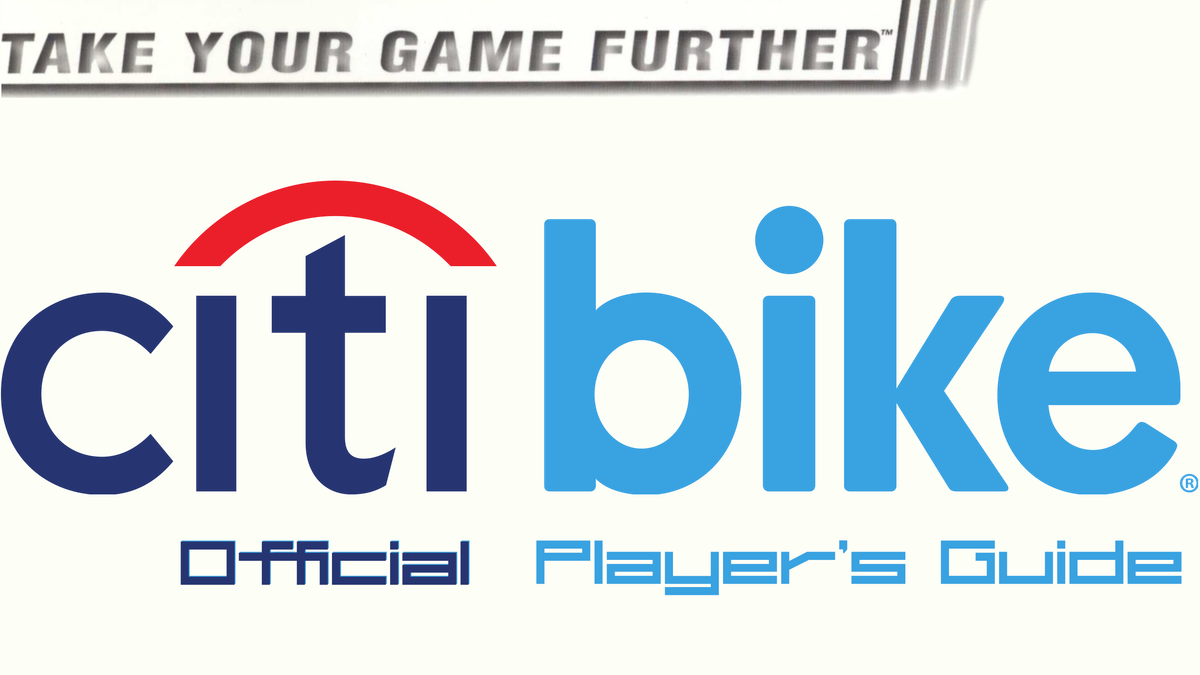As a cyclist, I have a bad habit of ignoring directions and navigating by vibes. I'll look at whatever route Google Maps spits out, agree it seems reasonable, and then completely ignore it in favor of getting somewhere based on a deeply personal sense of how I think roads fit together, using landmarks like "It's the street with the bar where I fought with my ex once" or "I think it's near the place that had good vegan sandwiches 20 years ago." This almost always works eventually, even if it's inefficient. My friends don't get it, but Despelote creator Julián Cordero gets it.
Cordero's Bike Race: New York City was one of four games I saw at Saturday's No Quarter exhibition at the NYU Game Center. No Quarter is an annual showcase of games commissioned by the game design department; the event is always a fun time, and the games are always the good kind of weird. Cordero described Bike Race in a written blurb by saying that, as a daily cyclist, "I tend to be very late to things and I always think I can catchup on time by biking faster. This is a game about that."
Bike Race uses two repurposed Citi Bikes as controllers. (Game Center chair Naomi Clark told me one of the bikes had been found abandoned, and the other had been decommissioned recently.) The bikes are imposed onto a scan of New York City, similar to a late game level in Despelote. Two players have to race to a real location, while the game encourages spectators to use Google Maps and shout out directions to help them get there.
The bikes aren't easy to control; turning is imprecise, and pedaling feels like it's on a kind of delay that made it hard to keep up my momentum. This meant a lot of careening up buildings or flying off the tops of cars, though wrestling with the bike did feel a lot like riding a real Citi Bike. All of this is made more difficult by the scan of the city, which turns a place I've biked for decades into a blobby nightmare of vaguely familiar buildings and streets.
A player playing Bike Race
When I played, I was tasked with getting to the Tenement Museum, a place I have biked by approximately ten million times and even have a friend who worked there. I knew it was downtown somewhere; I had an intense feeling of who I was when I was regularly nearby, and vivid memories of navigating the neighborhood on a bike I had kitted out in distinctive bands of red and black gaffer tape. But trying to turn all that into lefts and rights, especially without street signs, was thrillingly hard. The people watching me eventually surmised our game had started in midtown and we needed to go south, but I quickly ended up too far south, though quite how far wasn't clear until someone recognized a white building and realized we'd somehow gone to City Hall. Trying to get from City Hall to the Tenement Museum– again, a ride I have made countless times--became a stressful, dreamy, impossible journey. I swapped places with games journalist Yussef Cole and quickly Google Mapped the museum. Yussef was able to identify its location of Delancey Street, but we couldn't locate the cross streets in Bike Race's version of NYC; going east, we hit the Williamsburg Bridge without finding it, and as Yussef peddled frantically back toward the west, the other player beat us to it.
In honor of Aftermath's second birthday, we're having a sale! For a limited time, you can get your first month of our Reader tier for just $1!
Some players I spectated had to get to No Quarter, which means Brooklyn must be in the game too. Other games I watched ended up by the Intrepid on the west side and the spot at the bottom tip of Manhattan where you can see both the Brooklyn and Manhattan bridges. But there were lesser, more personal landmarks too: a random bank placed just so on a corner that made me realize we were near my undergrad college, or a storefront that made me yell unhelpfully "we're on that street in Chinatown with all the lamp stores!"
I loved the way Bike Race's rendering of NYC obscures major landmarks and emphasizes a kind of local familiarity, while also making my home turf feel strange and new. It turns the whole city into vibes, and forces players to navigate the way I do: vague memories, hunches, and their own personal compass. I felt vindicated watching people have fun with it, even if it made me understand a bit more why my commitment to vibes drives my friends nuts.




